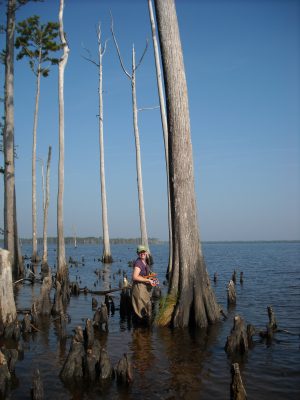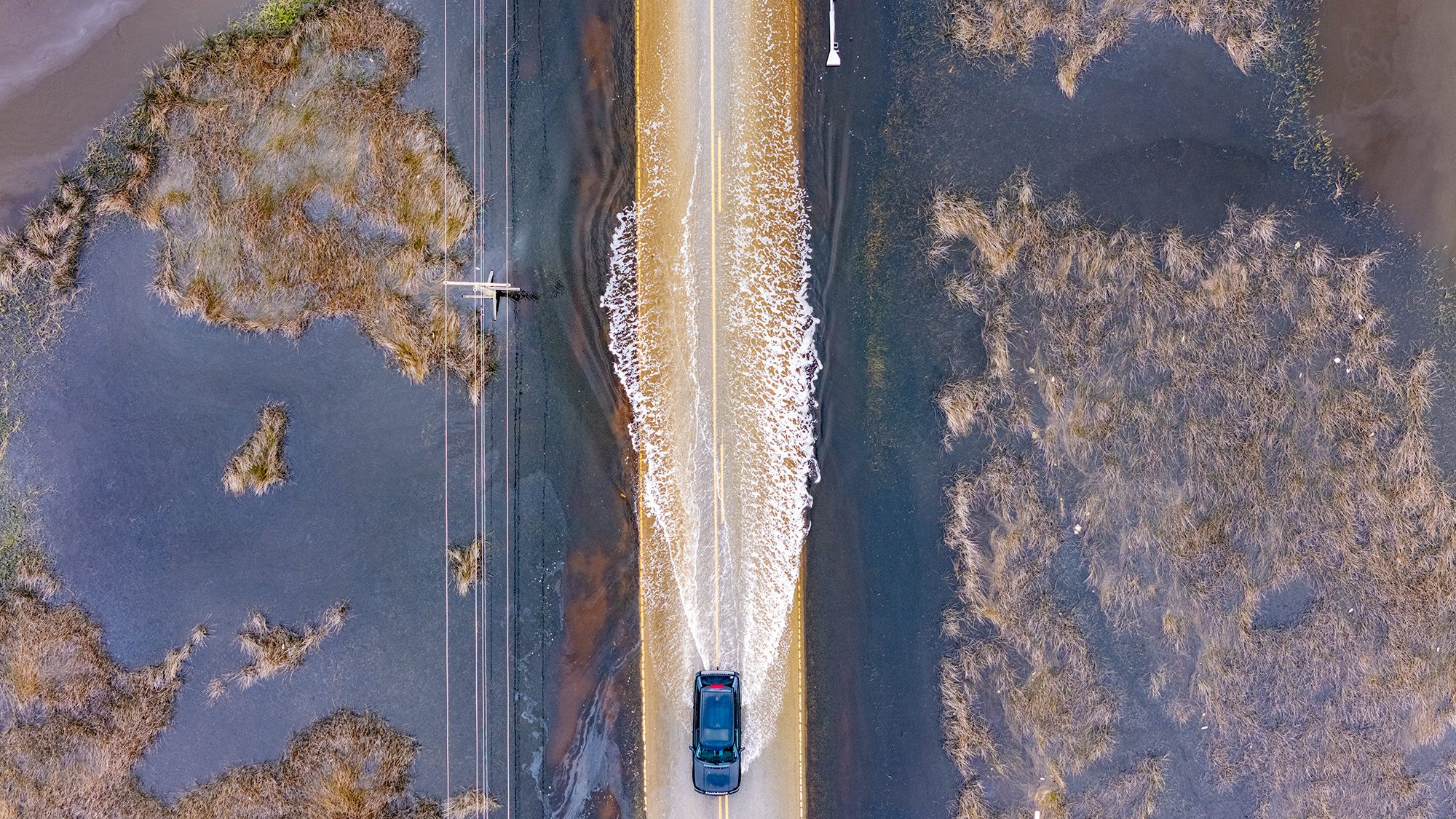To stimulate discussion and debate, Coastal Review Online welcomes differing viewpoints on topical coastal issues. See our guidelines for submitting guest columns. The opinions expressed by the authors are not necessarily those of Coastal Review Online or the North Carolina Coastal Federation.
GREENVILLE — Bald cypress and pond cypress are two closely related tree species common along the shorelines of our estuaries and rivers. The explorer Thomas Harriot described more than 400 years ago how Native Americans made their canoes out of cypress trees. Excavations in some of the lakes at Pocosin Lakes Wildlife Refuge have recovered canoes dating to pre-European times.
Supporter Spotlight

It is amazing to think that some of the trees alive back then are still living along our shores. Scientists have found bald cypress trees in North Carolina that are more than 1,600 years old, meaning the trees were alive before the Europeans’ arrival. What stories could these trees tell us about the changes they have seen along our shores?
We know that our coast is changing. We know that erosion is taking a toll on many beaches on the Outer Banks. Tidal records going back to the 1930s show increases in the levels of the tides. Unfortunately, most of our understanding comes from the Outer Banks or the oceanfront; we don’t know as much about what is happening along the shorelines of the Albemarle-Pamlico Estuarine System. Even though the Albemarle and Pamlico sounds support fisheries that are both economic and culturally important, our understanding of changes to our sounds has lagged behind the interest in the Outer Banks.
The shores of the Albemarle and Pamlico sounds are covered by marshes and forested coastal wetlands, which we normally call swamps. As sea level rises, research from North Carolina and other places along the East Coast suggests that saltwater marshes are good at keeping up with the rising tides. However, it is unclear how swamps will deal with rising sea levels. It could be that swamps are replaced by marshes in areas experiencing sea level rise, which means the exchange of one wetland type for another. However, in the worst of cases, swamps might drown from the rising sea levels faster than a new marsh can form, leading to the creation of “ghost forests” and eventually leading to open water. Areas in Bull Neck Swamp, Palmetto-Peartree Preserve, Alligator River National Wildlife Refuge and Goose Creek State Park are just some examples where the loss of swamps are occurring.

Common tree species in swamps include bald cypress and pond cypress, water tupelo and pond pine, among many others. Swamps can provide important habitat for endangered and threatened species, such as the red-cockaded woodpecker. As swamps are drowned with rising sea levels, most of the tree species die out, and cypress are usually the last ones to persist.
Even though a cypress tree living in the water is a common sight when visiting the sounds, their seeds require dry land to get established. That means that all those trees sitting in water today, started their lives on dry land many years ago. Cypress trees can live with up to three feet of standing water, as long as the water is not too salty. If the trees are flooded with too much water, or too much salt, they begin to die. As they die, their trunks and branches remain standing for a long time, forming “ghost forests,” which are becoming a common sight around the shores of our estuaries and rivers.
Supporter Spotlight
The appearance of ghost forests is happening all across the southeastern coastal plain of the U.S. It is unclear how these ghost forests function compared to a healthy swamp. Do they provide habitat for endangered species? Do ghost forests sequester as much carbon as healthy swamps do? Do ghost forests help decrease inland flooding during storms? Understanding the answers to these questions will be important to mitigate the negative consequences of rising sea levels.
Cypress trees can serve as sentinels of our sounds, if we learn how to read their stories. We are beginning a citizen science project to collect photos, locations, and basic information about cypress trees along the shores of our sounds and rivers. Using simple mobile device applications, we are asking people to take pictures and answer some basic questions about these trees and send them to a central website. Submitting an entry can take less than five minutes.
By increasing the number of eyes and cameras that are looking for these trees, we hope to get a more complete picture of their current health. Our goal is to begin to connect the dots to better understand how our shores are changing. If you are out in the Albemarle Sound or Pamlico Sound or some of the major rivers fishing, hunting, bird watching or simply enjoying nature and you see these beautiful trees, snap a picture of them and send it to us.
We hope you will help us improve our understanding of how these majestic trees, and swamps, are being affected by a changing climate and rising sea levels, in order to better prepare for an uncertain, but certainly different, future.








